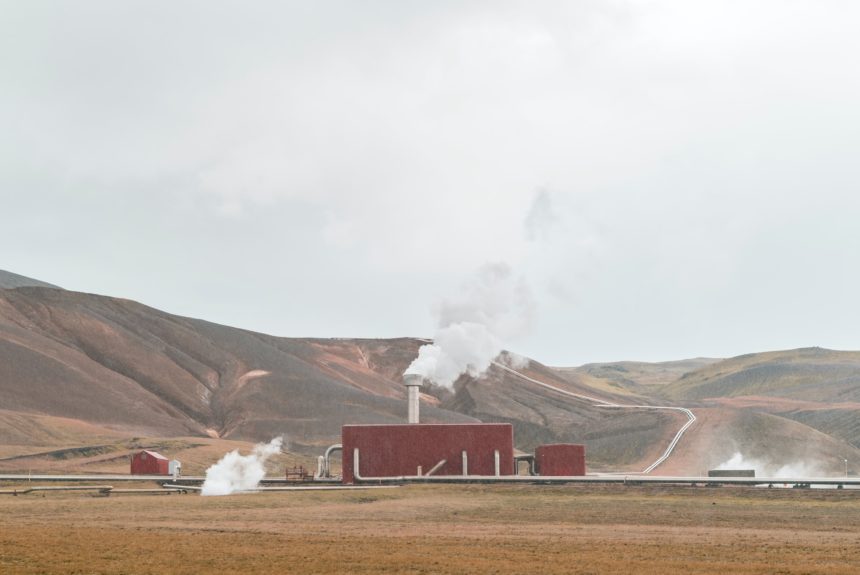Geothermal energy is making a comeback. For decades, geothermal power has lagged behind other renewable technologies like solar and wind, lacking the scalability and cost-competitiveness of more conventional energy resources. But that may be about to change. The U.S. Department of Energy (DOE) recently awarded more than $4.8 million in federal funding to the Pacific Northwest National Laboratory (PNNL) – met with 50 percent industry match – to commercialize promising technologies in the field of geothermal energy. The grant will support emerging energy solutions like the development of self-healing cement, a technology that could potentially revolutionize geothermal wells.
Among PNNL’s chief industry partners is a Seattle-based company known as AltaRock Energy. The company, which specializes in the production and deployment of Enhanced Geothermal Systems (EGS), has ambitious prospects of powering the entire global population by 2050 via its Superhot Rock Geothermal (SHR) solution. According to its website, the next-generation drilling method would yield ten times more energy than traditional geothermal wells and offer the energy source a path to global scalability. Currently, geothermal projects are restricted to very location-specific areas like Iceland or parts of volcanic-laden California, where superhot geology is found close to the Earth’s surface. If engineers developed the ability to penetrate deeper and hotter rock anywhere in the world via advancements in emerging technologies, this would essentially provide an unlimited supply of geothermal power – significant enough to meet the world’s global energy needs.
AltaRock’s potential to revolutionize the industry is one such reason why the DOE awarded millions in federal research grants to the company in June. Among PNNL’s award-winning creations is the development of self-healing cement for subsurface applications, a polymer-backed technology that can self-repair concrete within 24 hours of a fissure. The innovation has huge implications for the industry, which is overly dependent on conventional drilling parts that cannot sustain the extreme conditions necessary to reach deeper, “superhot” ground.
>>>The Future of Geothermal Energy
Currently, geothermal projects are delayed by repeated damage to electronic bits exposed to a chemically corrosive environment. Cement, in particular, is known to crack under pressure during geothermal mining.
“The development of a self-healing polymer-cement combination which is functional in geothermal environments could represent a game-changing technology towards the growth of the geothermal energy industry,” the team of scientists at PNNL described in their research.
The invention would not only prevent leaking from wellbores but extend concrete’s lifetime threefold. The former phenomenon is particularly relevant for developing a viable, clean energy alternative since leaks from unsealed wellbores can pollute aquifers and contaminate surface water.
Self-healing cement that recrystallizes to fill any fractures would also remove tens of thousands of tons of standard cement from landfills each year since the well’s material would be used much longer.
Another promising invention spearheaded by AltaRock is the use of millimeter-wave technology to penetrate dense rock. The high-tech drilling method utilizes high-frequency microwave beam generators to “melt and vaporize rocks” at ten times the speed of existing mechanical technologies. The “enhanced” drilling procedure would enable drillers to perforate rock faster, at greater depths, and at a lower cost than prevailing techniques. Currently, drilling sites are limited to areas that are a maximum of three kilometers deep and have a peak temperature of 230 degrees Celsius (446 Fahrenheit). This limitation restricts geothermal projects to a select few places in the world where prospectors can find naturally occurring hot rock near the Earth’s surface.
As a result, geothermal energy currently constitutes only about 0.2% of the planet’s total global power capacity. But according to AltaRock, developing equipment that can withstand extreme temperatures (around 10,800 degrees Fahrenheit) could potentially unleash enough energy to power the entire world population for two million years. Just 0.1% of the Earth’s total geothermal power could meet this demand.
“Today, we have an access problem,” Carlos Araque, CEO of Quaise, an AltaRock affiliate, told IEEE Spectrum. “The promise is that if we could drill 10 to 20 kilometers deep, we’d basically have access to an infinite source of energy.”
According to panelists at the PIVET2021 conference hosted in late July, water underground turns “supercritical” at around 374 degrees Celsius (705 Fahrenheit), meaning it transforms into a steam-like phase that can transport five to ten times more energy than regular hot fluid. At extreme depths, the Earth’s core radiates enough heat to generate supercritical water in constant supply just about anywhere on the planet. Developing advanced geothermal systems capable of tapping into these geothermal sources would represent an unbridled opportunity for creating a truly carbon-free and sustainable future.
AltaRock’s ongoing research into millimeter-wave technology and discoveries like self-healing cement have the power to transform the energy industry’s future. While upfront R&D costs in the industry are high relative to other renewables, it is only a matter of time before scientists engineer breakthrough systems capable of drilling into supercritical environments.
Nathalie Voit is a freelance content creator and a graduate of the University of Florida. She is an alumni of The Heritage Foundation’s Young Leaders Program.
The views and opinions expressed are those of the author’s and do not necessarily reflect the official policy or position of C3.
